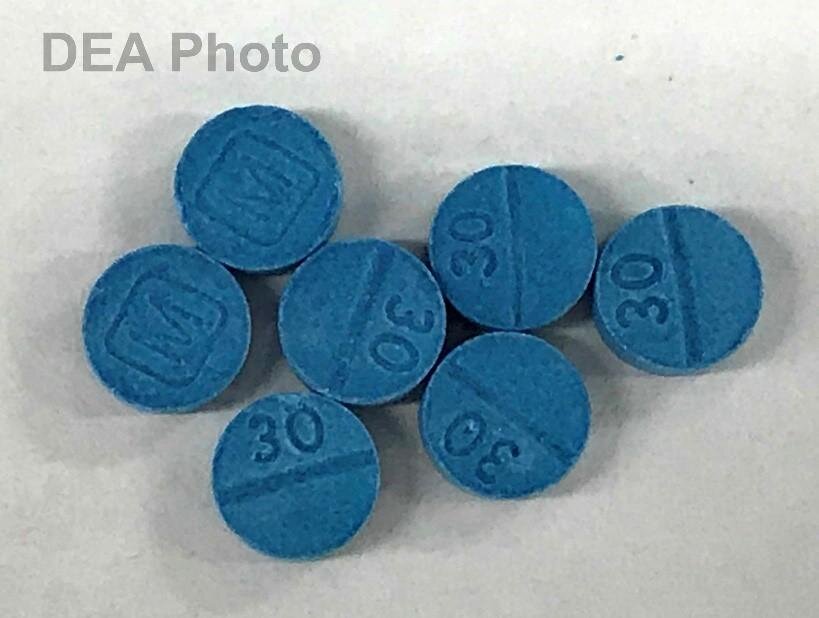1 in 4 Counterfeit Pills Have Lethal Dose of Fentanyl
/By Pat Anson, PNN Editor
Illicit drug users who buy prescription pills online or off the street are playing a dangerous game of Russian Roulette, according to a new laboratory analysis by the U.S. Drug Enforcement Administration.
The DEA found that about one of every four counterfeit pills (27%) have a potentially lethal dose of fentanyl, a synthetic opioid that is 80-100 times stronger than morphine.
Counterfeit pills laced with illicit fentanyl are appearing across the country and have been linked to thousands of deaths. Many of the overdoses involve blue pills stamped with an “M” and a “30” – distinctive markings for 30mg fake oxycodone tablets known on the street as “Mexican Oxy” or “M30.”
Based on a sampling of 106 tablets seized nationwide between January and March 2019, the DEA found that 29 of the pills contained at least 2 mg of fentanyl, a potential lethal dose. At least one pill seized in California had 4.2 mg of fentanyl — more than twice a lethal amount.
“Capitalizing on the opioid epidemic and prescription drug abuse in the United States, drug trafficking organizations are now sending counterfeit pills made with fentanyl in bulk to the United States for distribution,” said DEA Acting Administrator Uttam Dhillon. “Counterfeit pills that contain fentanyl and fentanyl-laced heroin are responsible for thousands of opioid-related deaths in the United States each year.”
The DEA laboratory analysis found fentanyl in 21% of the heroin samples tested. Fentanyl is often added to illicit drugs to boost their potency.
‘Enough to Kill Entire Population of Ohio’
In recent months, there have been outbreaks of fentanyl-related overdoses around the country. Law enforcement agencies are also seizing larger amounts of fentanyl from drug traffickers.
In September, DEA agents found a pill press and five pounds of pure fentanyl in a San Diego apartment. Prosecutors said that was “enough to kill the city of San Diego” or about 1.5 million people.
That seizure was overshadowed a few weeks later, when 45 pounds of suspected fentanyl were seized in Montgomery County, Ohio. A Homeland Security agent said that was "enough to kill the entire population of Ohio, many times over."
Public health officials in Seattle recently warned about a spike in fentanyl-related overdoses that killed at least 141 people in King County, including several teenagers. Parents and students are being warned in public service announcements not to consume any pill not directly obtained from a pharmacy or prescriber.
Last week health officials in Virginia predicted the state would have a record number of drug overdoses in 2019. Most of the 1,550 projected overdoses involve illicit fentanyl.
As in other parts of the country, fentanyl related deaths have surged in Virginia, while overdoses involving prescription opioids have remained relatively flat for over a decade.
“In 2015 statewide, the number of illicit opioids deaths surpassed prescription opioid deaths. This trend continued at a greater magnitude in 2016, 2017, and 2018,” the Virginia Department of Health said in its latest quarterly report. “There has not been a significant increase or decrease in fatal prescription opioid overdoses.”




















